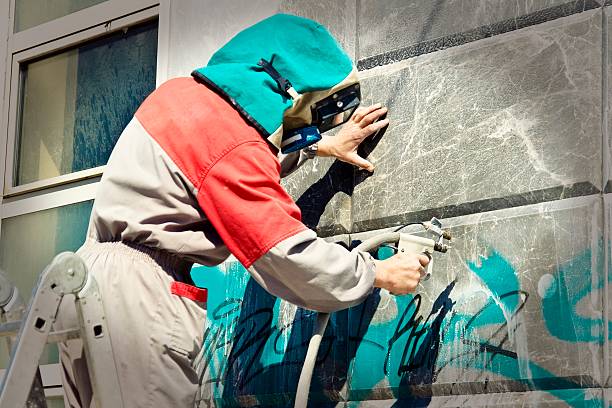Graffiti, a form of expression for some, can be a nuisance for property owners and communities trying to maintain a clean and unblemished appearance. Fortunately, the market offers a range of graffiti removers designed to combat the unwanted marks left behind by vandals. Choosing the right graffiti remover is crucial, as different surfaces and types of graffiti require specific solutions. In this guide, we explore the considerations and options involved in selecting the most effective graffiti remover for your needs.
Page Contents
Understanding Graffiti and Its Varieties:
Before delving into the world of graffiti removers, it’s essential to understand the diverse nature of graffiti itself. Graffiti comes in various forms, including spray paint, permanent markers, and even stickers. Each type poses unique challenges when it comes to removal, requiring tailored solutions to achieve optimal results.
Surface Considerations:
Different surfaces demand different approaches to graffiti removal. The type of material, whether it’s concrete, brick, metal, glass, or wood, plays a significant role in determining the effectiveness of a graffiti remover. Harsh chemicals suitable for one surface may damage another. For instance, a remover safe for glass may not be ideal for use on painted metal surfaces. Understanding the composition of the affected surface is the first step in choosing an appropriate solution.
Chemical vs. Bio-Based Graffiti Removers:
Graffiti removers come in two main categories: chemical-based and bio-based. Chemical removers typically contain solvents that break down the paint or ink, making it easier to wipe or wash away. Bio-based removers, on the other hand, use natural ingredients like citrus extracts or soy-based formulations to dissolve and lift graffiti. The choice between these options often depends on factors such as environmental considerations, the type of graffiti, and the surface being treated.
Testing on a Small Area:
Before committing to a particular graffiti remover, it’s wise to test the product on a small, inconspicuous area of the affected surface. This step helps determine the remover’s compatibility with the material and ensures it won’t cause unintended damage. Additionally, testing provides insights into the effectiveness of the remover against the specific type of graffiti encountered.
Consideration for Environmental Impact:
As environmental consciousness grows, so does the demand for eco-friendly solutions. Many bio-based graffiti removers are formulated with sustainability in mind, offering an environmentally friendly option for those who prioritise green alternatives. Consider the environmental impact of the chosen remover, especially if the graffiti is in an outdoor or public space.
Also Read=Spring Clean Up: How to Power Wash Your Patio
Safety Precautions:
Safety should be a paramount concern when dealing with graffiti removers. Chemical-based solutions may contain harsh substances that pose risks to users and the surrounding environment. Proper protective gear, such as gloves and masks, should be worn when applying these removers. Bio-based options are generally considered safer, but it’s essential to follow the manufacturer’s instructions and take necessary precautions to avoid any potential hazards.
Effectiveness Against Specific Graffiti Types:
Different graffiti types may require specialised removers. For example, removing spray paint may necessitate a different solution than tackling graffiti made with permanent markers. Understanding the nature of the graffiti you’re dealing with helps in choosing a remover with the right set of ingredients and properties to effectively erase the marks.
Ease of Application and Cleanup:
The ease of application and cleanup is a practical consideration. Some graffiti removers come in convenient spray bottles, making application straightforward. Others may require additional tools or techniques. Likewise, the cleanup process can vary; some removers may require rinsing with water, while others may only need wiping with a clean cloth.
Long-Term Impact on Surfaces:
Consider the long-term impact of the chosen graffiti remover on the treated surface. Certain removers may leave behind a residue or affect the original finish of the material. Choosing a remover that not only removes graffiti effectively but also leaves the surface in its original condition is crucial for maintaining the integrity of the property.
Conclusion:
Choosing the right graffiti remover involves careful consideration of the type of graffiti, the affected surface, environmental impact, safety, and the long-term effects on surfaces. By understanding these factors and conducting a small test, users can select a remover that aligns with their specific needs and ensures the effective eradication of unwanted graffiti. With the right remover in hand, the battle against graffiti becomes more manageable, allowing property owners and communities to reclaim their spaces and keep them clean and pristine.

Lois Lane is a professional blogger and a seasoned Content writer for wellhousekeeping.com. With a passion for simplifying complex Home Decor topics, he provides valuable insights to a diverse online audience. With four years of experience, Lois has polished his skills as a professional blogger.



